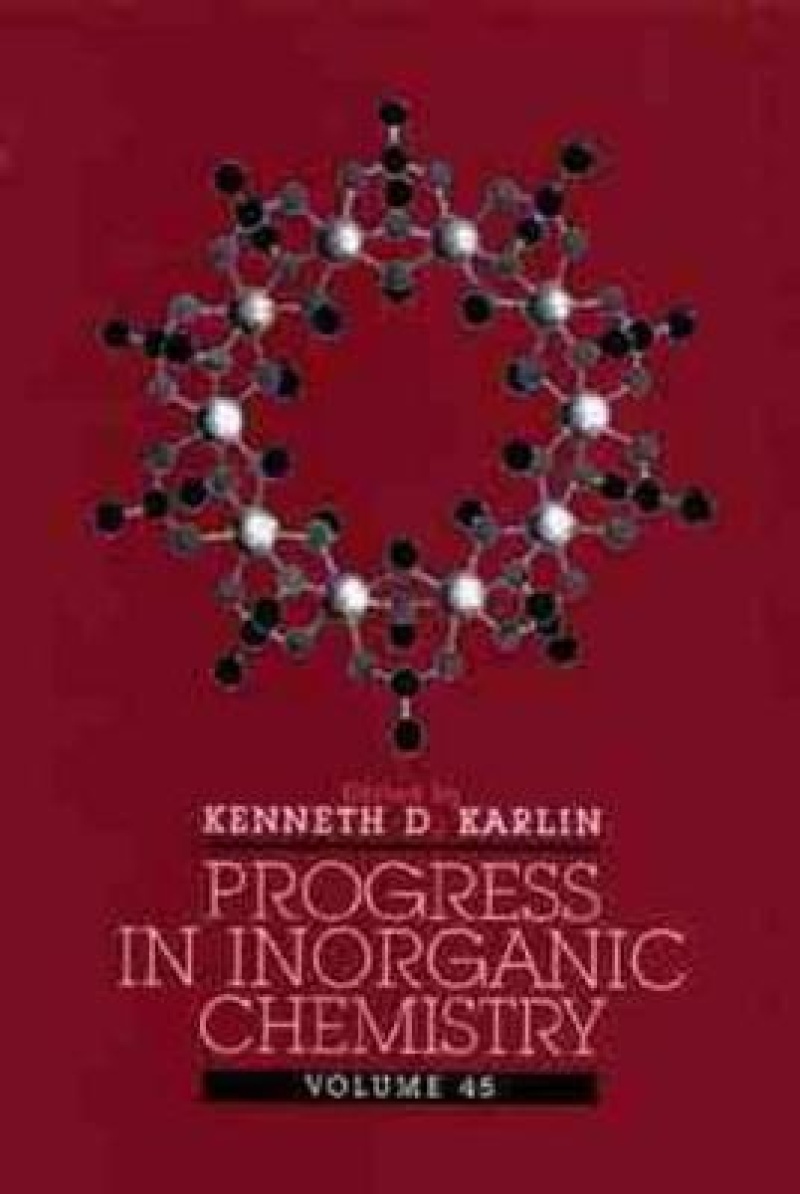PROGRESS in Inorganic Chemistry
Today's cutting-edge chemical experimentation is a foretaste of thetechnical arsenal of tomorrow's chemist. Progress in InorganicChemistry affords instant and convenient access to every area ofinnovative chemical research and has long served as theprofessional chemist's index to the newest and influential turns ininorganic chemistry. Featuring the work of internationally renownedchemists, Volume 45 discusses:
* Selective Recognition of Organic Molecules by Metallohosts (JamesW. Canary and Bruce C. Gibb, New York University)
* Metallacrowns: A New Class of Molecular Recognition Agents(Vincent L. Pecoraro, Ann J. Stemmler, Brian R. Gibney, Jeffrey J.Bodwin, Hsin Wang, Jeff W. Kampf, and Almut Barwinski, Universityof Michigan)
* The Interpretation of Ligand Field Parameters (Adam J. Bridgemanand Malcolm Gerloch, University Chemical Laboratories)
* Chemistry of Transition Metal Cyanide Compounds: ModernPerspectives (Kim R. Dunbar and Robert A. Heintz, Michigan StateUniversity)
* Assembling Sugars and Metals: Novel Architectures andReactivities in Transition Metal Chemistry (Umberto Piarulli andCarlo Floriani, University of Lausanne)
* Oxygen Activation Mechanism at the Binuclear Site of Heme-CopperOxidase Superfamily as Revealed by Time-Resolved Resonance RamanSpectroscopy (Teizo Kitagawa and Takashi Ogura, Institute forMolecular Science)
"This series is distinguished not only by its scope and breadth,but also by the depth and quality of the reviews." --Journal of theAmerican Chemical Society
"This series is a valuable addition to the library of thepracticing research chemist, and is a good starting point forstudents wishing to understand modern inorganic chemistry."--Canadian Chemical News
"[This series] has won a deservedly honored place on the bookshelfof the chemist attempting to keep afloat in the torrent of originalpapers on inorganic chemistry." --Chemistry in Britain
Metallacrowns: A New Class of Molecular Recognition Agents (V.Pecoraro, et al.).
The Interpretation of Ligand Field Parameters (A. Bridgeman &M. Gerloch).
Chemistry of Transition Metal Cyanide Compounds: ModernPerspectives (K. Dunbar & R. Heintz).
Assembling Sugars and Metals: Novel Architectures and Reactivitiesin Transition Metal Chemistry (U. Piarulli & C.Floriani).
Oxygen Activation Mechanism at the Binuclear Site of Heme-CopperOxidase Superfamily as Revealed by Time-Resolved Resonance RamanSpectroscopy (T. Kitagawa & T. Ogura).
Indexes.
PROGRESS in Inorganic Chemistry
Today's cutting-edge chemical experimentation is a foretaste of the technical arsenal of tomorrow's chemist. Progress in Inorganic Chemistry affords instant and convenient access to every area of innovative chemical research and has long served as the professional chemist's index to the newest and influential turns in inorganic chemistry. Featuring the work of internationally renowned chemists, Volume 45 discusses:
- Selective Recognition of Organic Molecules by Metallohosts (James W. Canary and Bruce C. Gibb, New York University)
- Metallacrowns: A New Class of Molecular Recognition Agents (Vincent L. Pecoraro, Ann J. Stemmler, Brian R. Gibney, Jeffrey J. Bodwin, Hsin Wang, Jeff W. Kampf, and Almut Barwinski, University of Michigan)
- The Interpretation of Ligand Field Parameters (Adam J. Bridgeman and Malcolm Gerloch, University Chemical Laboratories)
- Chemistry of Transition Metal Cyanide Compounds: Modern Perspectives (Kim R. Dunbar and Robert A. Heintz, Michigan State University)
- Assembling Sugars and Metals: Novel Architectures and Reactivities in Transition Metal Chemistry (Umberto Piarulli and Carlo Floriani, University of Lausanne)
- Oxygen Activation Mechanism at the Binuclear Site of Heme-Copper Oxidase Superfamily as Revealed by Time-Resolved Resonance Raman Spectroscopy (Teizo Kitagawa and Takashi Ogura, Institute for Molecular Science)
"This series is distinguished not only by its scope and breadth, but also by the depth and quality of the reviews." —Journal of the American Chemical Society
"This series is a valuable addition to the library of the practicing research chemist, and is a good starting point for students wishing to understand modern inorganic chemistry." —Canadian Chemical News
"[This series] has won a deservedly honored place on the bookshelf of the chemist attempting to keep afloat in the torrent of original papers on inorganic chemistry." —Chemistry in Britain
